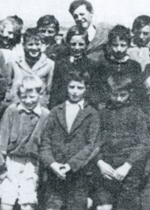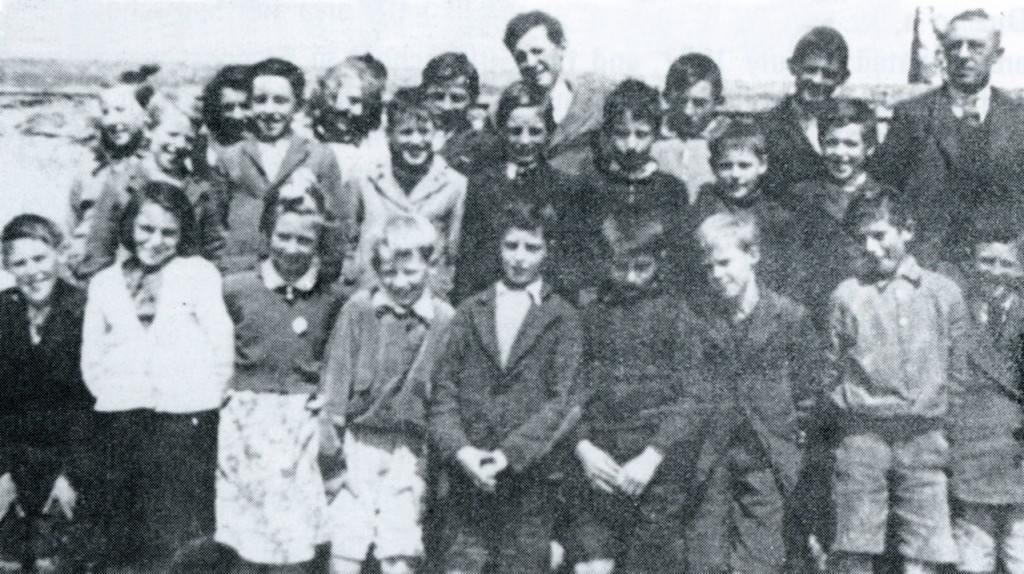Barna National School, 150 Years (25 09 2014)

The Report from the Commissioners of Irish Education Inquiry of 1826 list the following schools in the Barna area --- Barna Village, Barna House and Furbough.
The Master in Barna Village was Michael McDonogh, a Catholic, who was paid two pence a week for each scholar. The classes were held in the chapel of Barna. By the Protestant return, all the pupils were Roman Catholic, thirty one male and four female. By the Catholic return, there were forty four males and five females. Griffith’s Valuations shows that this school stood on a site of 2.30 acres within the Campbell Estate.
The Barna House School was run by the Misses Lynch who were also Catholic. Tuition was free and was held in a room in the house. By the Protestant return there were 25 Catholic female pupils, by the Catholic return there were fifteen Catholic pupils. The Misses Lynch were the sole patrons and conductors of the school. The Scriptures were not read in either school.
A new school named Scoil Naomh Shéamais was built on a half acre site in the townland of Freeport in 1856. It was an all girls’ school, a one-classroom building measuring 40’ x 20’ x 20’. The furniture consisted of 8 long desks with forms, each 9’ 6” in length and in addition one long form 5’ 9” in length.
The Boy’s School was built 150 years ago in 1864 opposite the Church and next to the ball alley. It was also a one-classroom building measuring 30’ x 20’ x 12’ and had 6 desks and forms (combined) and one separate form 10’ in length. Due to a decline in the number of boys in the area, the two schools were amalgamated in July 1937 and the girl’s school in Freeport was enlarged to cater for the educational needs of both boys and girls. It consisted of two classrooms, cloakrooms and exterior dry toilets. Heating was provided by a fire in each classroom and each child was asked to bring in two sods of turf daily to provide fuel for the fires. The subjects taught were Reading, Writing, Arithmetic, Geography, Bookkeeping, Science, Horticulture, Trigonometry and Algebra.
In 1963, modern flush toilets and wash hand basins were provided and in 1968, electric storage heating was installed. There were about 75 – 80 students attending at the time and the staff consisted of one teacher and an assistant. In 1971, a two-room pre-fab was erected and two new teachers appointed. As the school population grew another two-roomed pre-fab was erected and a 5th and 6th teacher were appointed in 1974 and 1977. In 1980, children of 101 families attended the school; 78% of those families had come to live in Barna in the previous 20 years and 22% were families who had lived in the area for generations.
In 1982, the school was replaced by the current two-storey building. Last year, a permanent building housing two classrooms for special needs education and ancillary services was added.
The school are organising a series of events to mark their 150th anniversary including a public Local History Lecture, talks to the children about local heritage and family history and a dinner dance in the Conemara Coast Hotel on Friday, October 17th @35 euro per ticket. This is not a fundraiser, rather a social event for the whole community. They are looking for old photographs to put on their website, so if you have any, you might email them to This email address is being protected from spambots. You need JavaScript enabled to view it. or bring them to the school to be scanned. All offers will be gratefully received. Their website is www.barnaprimaryschool.ie
Our photograph shows some pupils from 1943. They are, back row, L to R; Máirín Lydon, Nonie Carter, Sally Conneely, Mattie Cloherty, Tom Moroney, T.J. Donnelly, Mattie O’Connor, Mr. J. Moroney ‘The Master’. Second row; Stephen Cooney, Tommy Crowley, Paddy Beally, Packie Beag Connelly. Seán Connelly, Frank Greaney, Johnnie Gavin. In front are Tom Connolly, Peggy Carter, Ann Hoade, Pat O’Malley, Willie Greaney, Seán Fegan, John Connolly, Tony O Fegan and Martin Beally. All of the above is taken from “Barna agus Na Forbacha”, a local history published by the ICA in 1

